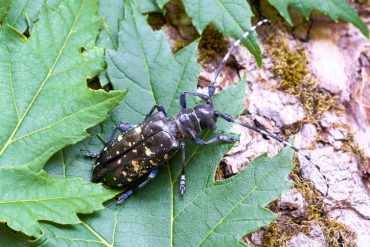Which Major American Pests are Invasive Species?
There are many common pests in the United States that are invasive species, which means they are non-native to the region and have been introduced either intentionally or accidentally. Some of the most well-known invasive pest species in the United States include:
- Asian longhorned beetle – a wood-boring beetle that attacks and kills a wide variety of trees, including maple, birch, and willow.
- Emerald ash borer – a small beetle that attacks and kills ash trees.
- Brown marmorated stink bug – a nuisance pest that can damage crops and fruit trees.
- Argentine ant – a small ant species that displaces native ant species and can damage crops.
- Zebra mussel – a freshwater mussel that clogs water intake pipes and damages infrastructure.
- European starling – a bird species that competes with native bird species for resources.
- Japanese beetle – a beetle that feeds on the leaves, flowers, and fruits of many different plant species.
These invasive pests can have significant ecological and economic impacts, including damage to crops and natural habitats, and they can even lead to the extinction of native species. It’s important to take steps to prevent their spread and manage their populations when they are introduced to new areas.
Invasive pests arrived in the United States in several ways, including:
- Accidental introduction through international trade: Many invasive pests were unintentionally introduced to the United States through international trade, particularly in plants, wood products, and soil. For example, the Asian longhorned beetle and emerald ash borer likely arrived in wooden shipping crates or pallets from Asia.
- Intentional introduction for pest control or other purposes: Some invasive pests were introduced intentionally as a means of controlling other pests or for other purposes. For example, the Argentine ant was introduced to California in the late 1800s to control citrus pests.
- Escape from captivity: Some invasive pests, particularly those that are kept as pets or in zoos, may escape or be released into the wild. For example, the Burmese python, which is an invasive species in Florida, is believed to have been introduced as a result of escaped or released pets.
- Human transportation: Some invasive pests can hitch a ride on human transportation, such as in luggage or on clothing. For example, the brown marmorated stink bug likely arrived in the United States on a shipment of goods from Asia.
Once introduced, invasive pests can spread rapidly and cause significant damage to natural habitats, agriculture, and infrastructure. It’s important to take measures to prevent their introduction and to manage their populations when they are introduced to new areas.


